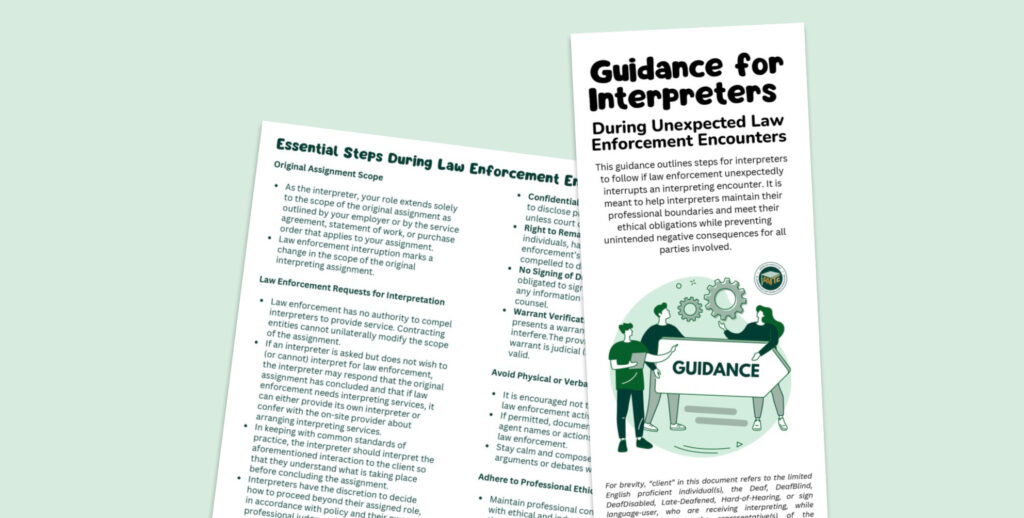Wisconsin Lawmakers Need to Hear from You Again – Take Action Now
Wisconsin needs professional human interpreters, not artificial intelligence. Read our updated letter to lawmakers and take action. This is an update to an earlier…
Read MoreThe Chain of Responsibility: AI in the World of Interpreting
There are those who say that something is better than nothing. AI interpreting is better than no language access at all, they argue. But if that something has the same result as nothing, then there was no language access provided.
Read MoreATA and Sister Associations Publish Guidance for Interpreters During Unexpected Law Enforcement Encounters
ATA Members-Only Content This content is an exclusive benefit for ATA members. If you are a current ATA member, log in for immediate access.…
Read MoreThe SMART Approach: How Interpreters Can Prepare for an Oral Certification Exam
Certification exams are as much about good interpreting skills as about strategies. If you’re an interpreter preparing for the oral certification exam, here’s how the “SMART” approach can help!
Read MoreATA Advocacy Updates: Leading Language Organizations Oppose Executive Order 14224, Warn of Potential Consequences
ATA’s Advocacy Committee and Public Relations Committee recently worked on two major initiatives: joining other organizations to oppose Executive Order 14224, and urging President Trump, his cabinet, and members of Congress to reinstate safe pathways for interpreters who worked alongside U.S. troops in Afghanistan.
Read MoreInterpreting the Russian–Ukrainian War for Television: Hiding Emotions under the Social Carpet
The role of emotions in interpreting is a relatively new field capturing scholarly attention. In this article, an experienced media interpreter explores the role emotional labor plays when interpreting the Russian–Ukrainian war for the media, particularly the challenges faced by interpreters and the coping mechanisms they use.
Read MoreMentoring the Future: Training Court Interpreters
The demand for court interpreters exceeds the supply of qualified interpreters. Staff interpreters can provide effective training with readily available resources. This improves language access and the working environment for interpreters.
Read MoreThe Safe AI Task Force
In just over a year, the SAFE AI Task Force has made significant progress in addressing the challenges and opportunities presented by generative AI in the interpreting profession. Our achievements are part of a broader, surprisingly swift, global response to AI technologies. As organizations worldwide have worked to establish guidelines and guardrails, we’ve positioned ourselves as an important voice representing the unique concerns and priorities of the interpreting community.
Read MoreThe Body Speaks: The Interpreter’s Nonverbal Communication in the Courtroom
This article explores the often-overlooked role of interpreters’ nonverbal communication in the courtroom. It examines how body language influences interactions, communicates bias, and affects judicial outcomes, offering strategies for maintaining neutrality.
Read MoreE106: Inside Specialization – Interpreting with Technology
Listen in as Dieter Runge, co-founder of Boostlingo, discusses how new technology effects interpreters with Daniel Sebesta and Bridget Hylak of ATA’s Language Technology Division.
Read MoreLanguage Frontlines: The Urgent Mission to Train Indigenous Interpreters in the U.S.
The ongoing mission to train more interpreters is vital for upholding justice and equality within the legal system.
Read MoreE103: Inside Specialization – Dental Translation
In this episode of Inside Specialization, Anne Conner speaks with Mario Muchacho, DDS, about how he pursued a career in dentistry but found his true calling as a dental translator instead.
Read More










